Track Your Exercises in Lean (EAT)
Lean calculates the energy expenditure from your workouts with unmatched precision.
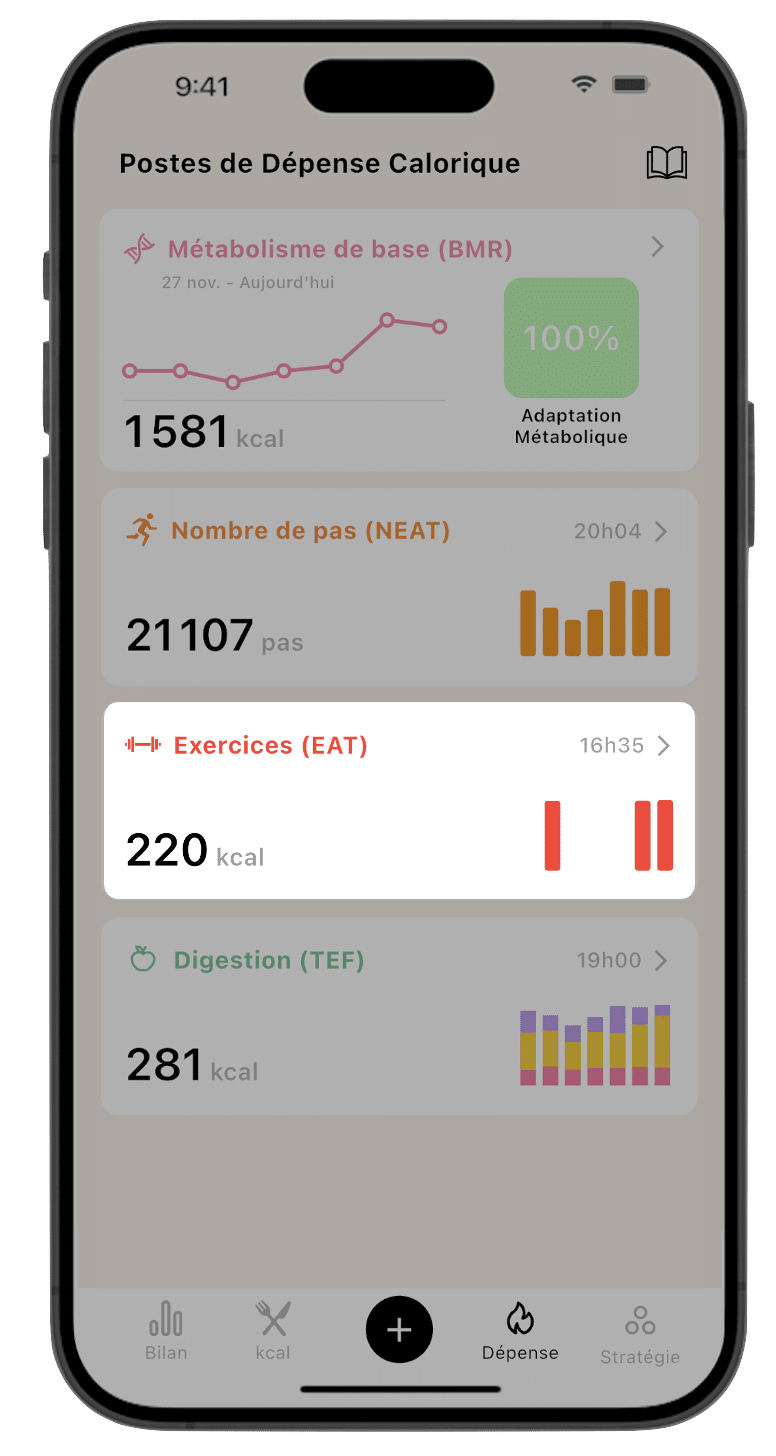
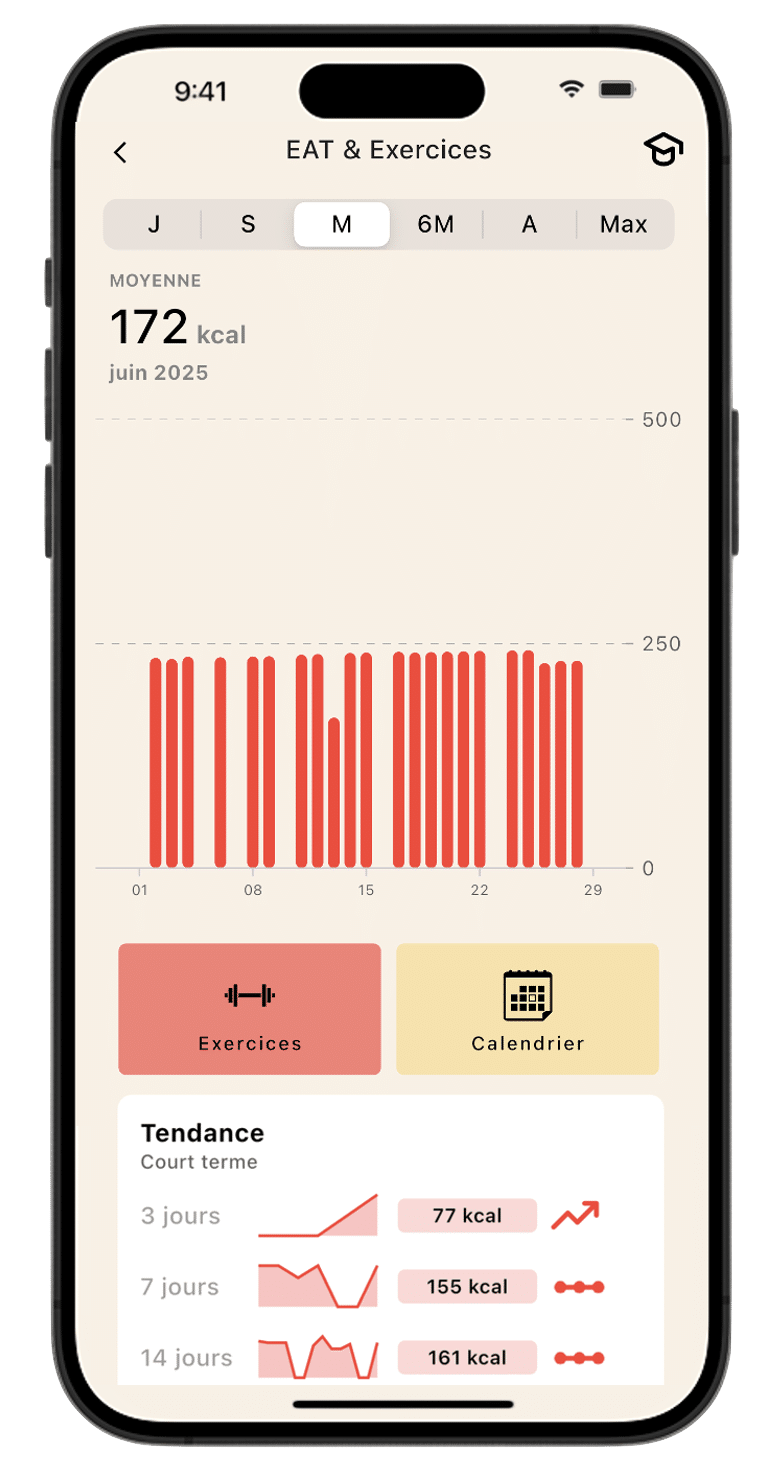
Calculate your exercise-related calorie expenditure, fully personalized to your metabolism and eating habits
Lean uses a unique energy expenditure formula, along with all the weight and nutrition data you log, to personalize your calorie intake targets and determine your training-related energy burn — for any type of sport.
EAT (Exercise Activity Thermogenesis)
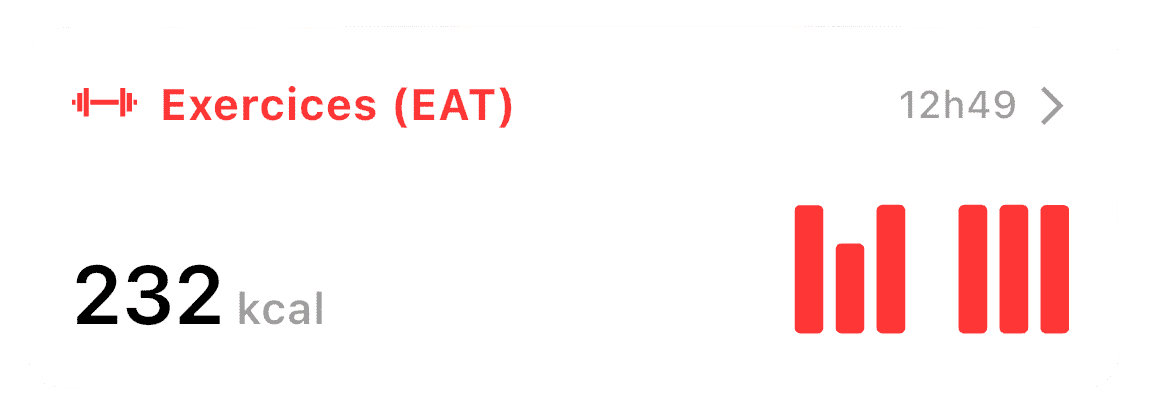
EAT (Exercise Activity Thermogenesis) refers to the calorie burn generated during workout sessions — this is the term used in scientific literature to describe energy expenditure from exercise.
Learn more: EAT: Understanding and Optimizing Exercise-Related Energy Expenditure
How does it work?
In the Lean app, under the EAT section, you can log each of your workout sessions by selecting from a comprehensive list of exercises.

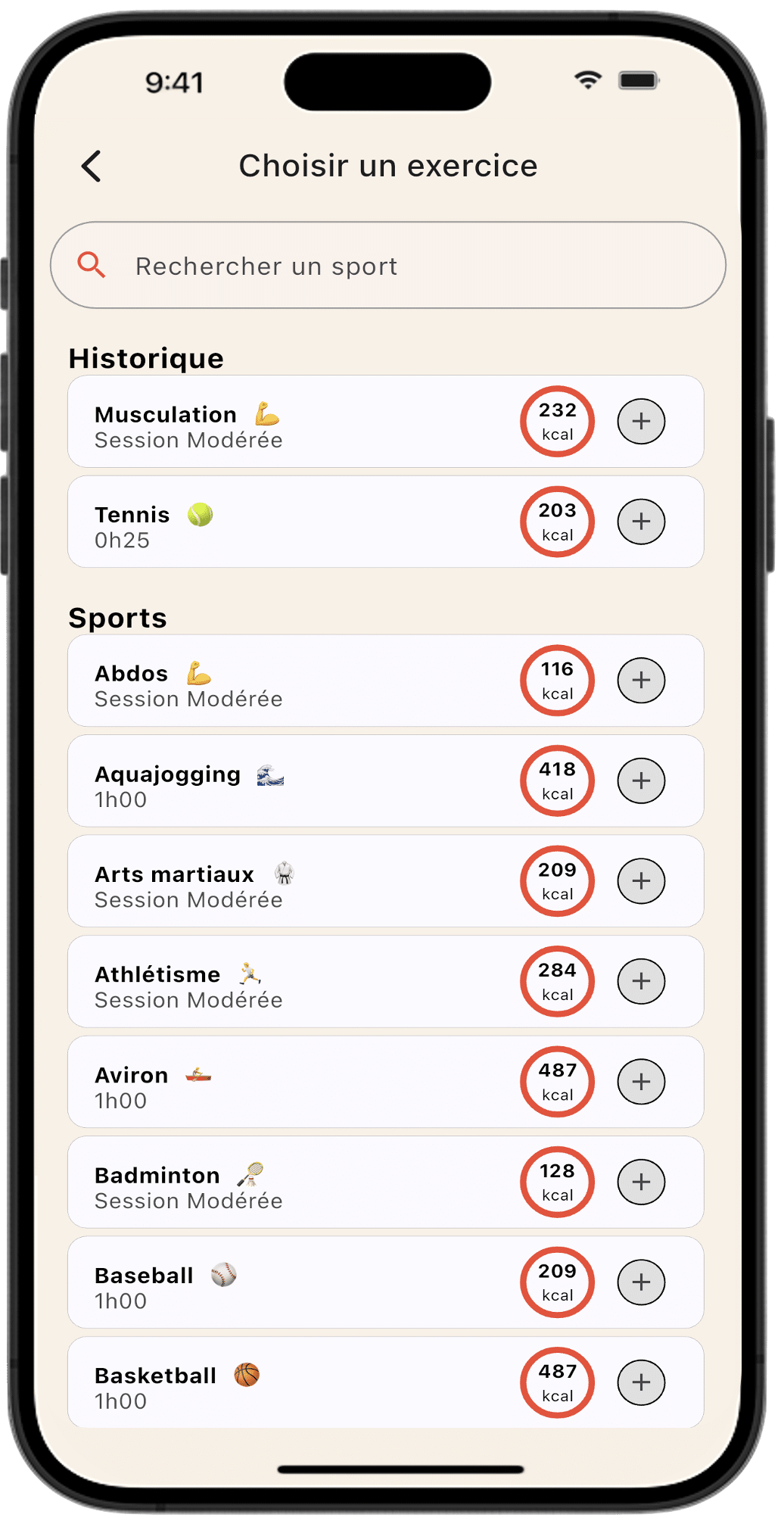
For sports classified as cardio, you’ll enter the duration of the workout, excluding rest periods.
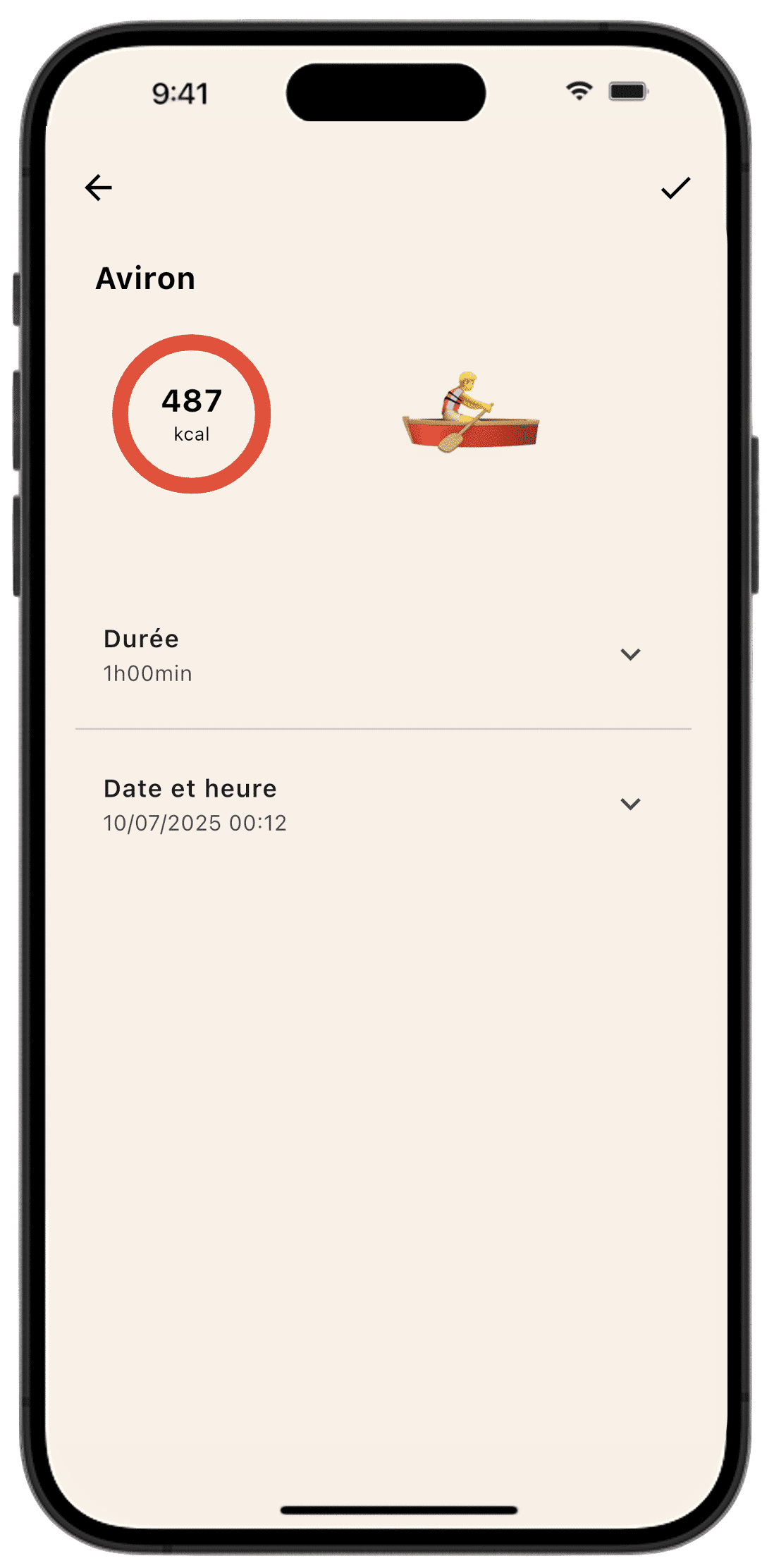
For non-cardio sports, you’ll need to select the intensity of your workout. (Example: for a weight training session, a leg workout is considered intense, while an upper body workout is considered moderate.)

Why Is Lean Different?
Most other calorie tracking apps make two major mistakes:
- The workout energy expenditure calculation doesn’t rely on Basal Metabolic Rate (BMR). And when it does, the BMR estimate is often inaccurate, making the EAT evaluation unreliable.(See BMR section))
- These apps assume the workout is continuous and don’t account for actual active time. As a result, the estimated calorie burn is often wildly exaggerated.
Difference between YAZIO and Lean in NEAT calculation




Lean is the only app that dynamically calculates the energy you burn during weight training sessions based on your real metabolism, and it never overestimates this value!
The Problem with Wearable Devices
Wearable devices like smartwatches, fitness bands, or walking treadmills are known for poorly estimating your actual energy expenditure. In fact, there's a consistent overestimation of around +30% for workout sessions — and that number can go up to +100%..

plus de 1000 kcal sur Apple Watch
Example: Imagine you’re trying to lose fat with a light caloric deficit: -100 kcal/day..
- At the end of the week, your caloric balance would be: -700 kcal/week
- But you relied on your Apple Watch, which estimated your weight training session at 1000 kcal instead of 200 kcal — an overestimation of +800 kcal
800 kcal watch error – 700 kcal weekly deficit = +100 kcal
You’re actually in a caloric surplus!
Just by trusting your smartwatch, you’ve completely ruined all the efforts you made to lose fat.
Lean ensures that every time an exercise is logged, its energy contribution is precisely calibrated so you’re never misled.
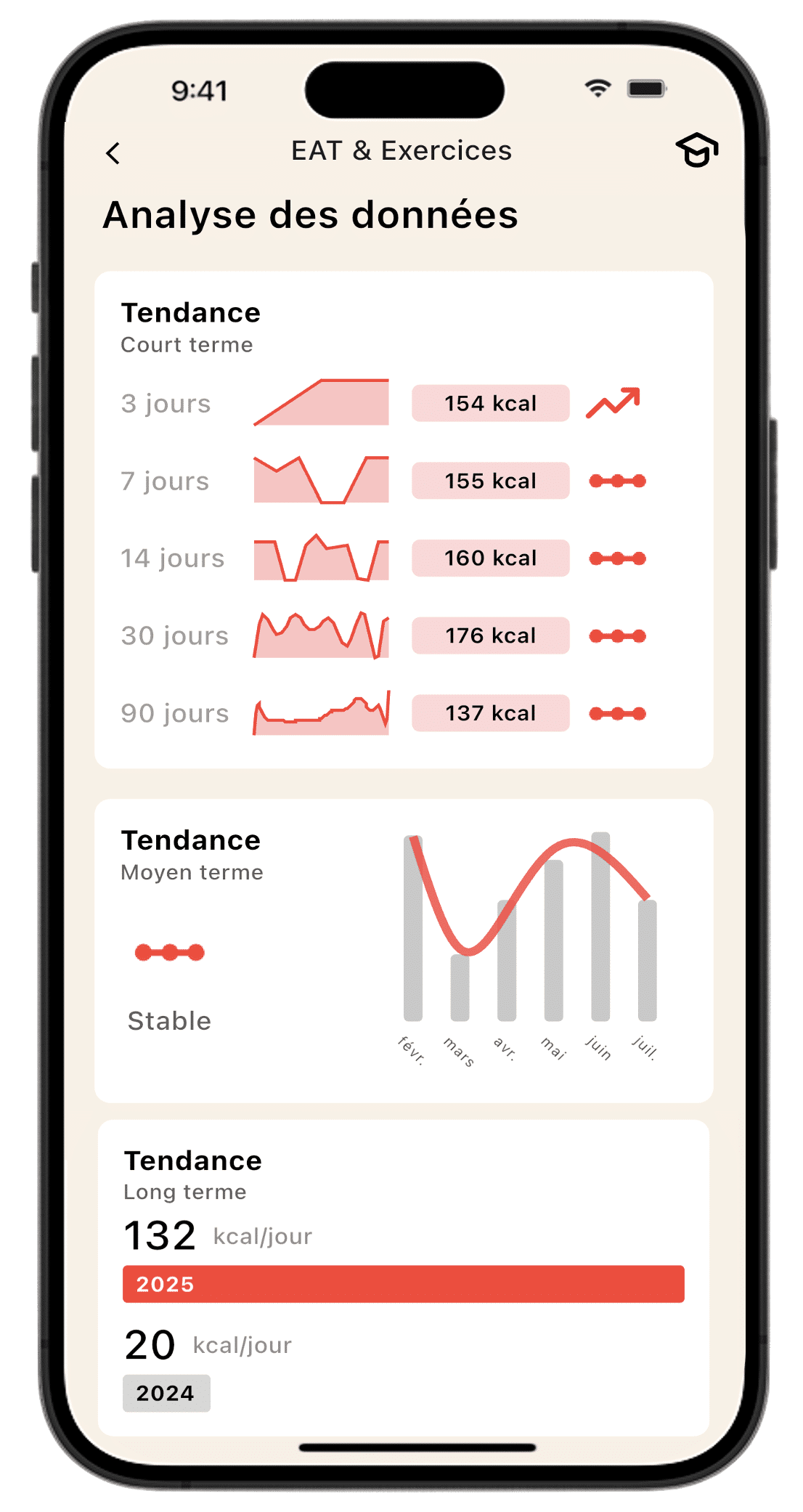
Analyze the impact of your workouts on your daily energy expenditure (TDEE) and truly harness the power of your EAT.
Complete Lean Tutorial
COMMENT COMPTER SES CALORIES AVEC LEAN ! F BOY
FAQ
How to Choose the Intensity of a Weight Training Session
If you're just starting out with weight training and still struggling to lift weights, it's best to select Light intensy.If you're a regular lifter and can bring real intensity to each set, choose Moderate intensity for upper body sessions and High intensity for lower body sessions.
NEAT vs EAT conflict: What if I go running and my steps are counted in both NEAT and EAT?
In the exercise selection, some cardio sports include NEATIf your pedometer was active during your workout, then choose the exercises in Lean with NEAT included.

My weight training session only burns 200–300 kcal?
es, that’s completely normal! In reality, a weight training session burns very little energy, especially when compared to cardio. While strength training is demanding, it's intense over short bursts of time. According to several scientific studies, during a one-hour weight session, the average person is actually active for less than 10 minutes. Despite how tiring it feels, a workout is made up of over 80% rest time, so it's not surprising to see a calorie burn between 200 and 300 kcal for weight training.
If weight training burns so little, is it even worth it?
Big mistake — absolutely yes! Strength training directly impacts your muscle mass, and therefore your Basal Metabolic Rate (BMR). Remember: BMR accounts for 60–90% of your Total Daily Energy Expenditure (TDEE). By building muscle through weight training, you increase your BMR over time. Plus, your EAT and NEAT are both linked to your BMR — meaning that by boosting your BMR, you’re also increasing your EAT and NEAT. This is the start of the virtuous circle.
Learn more in this video:
Augmenter son MÉTABOLISME : +500 kcal/jour F BOY
